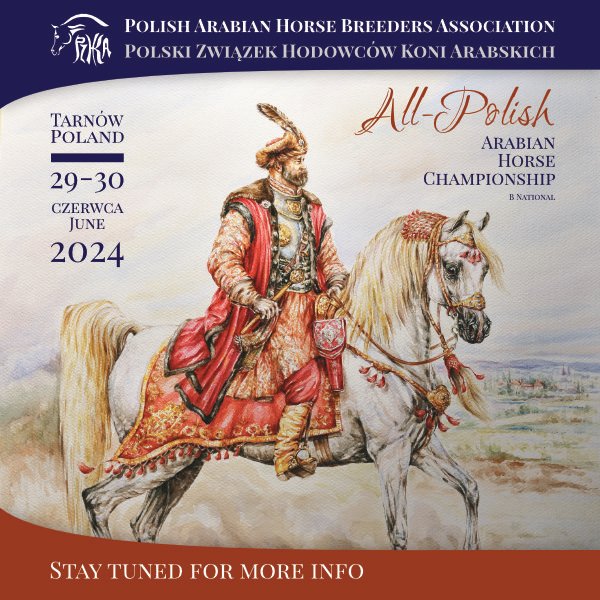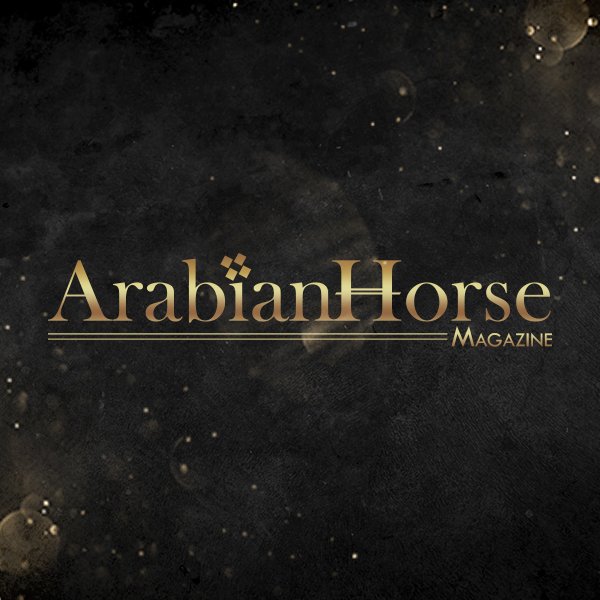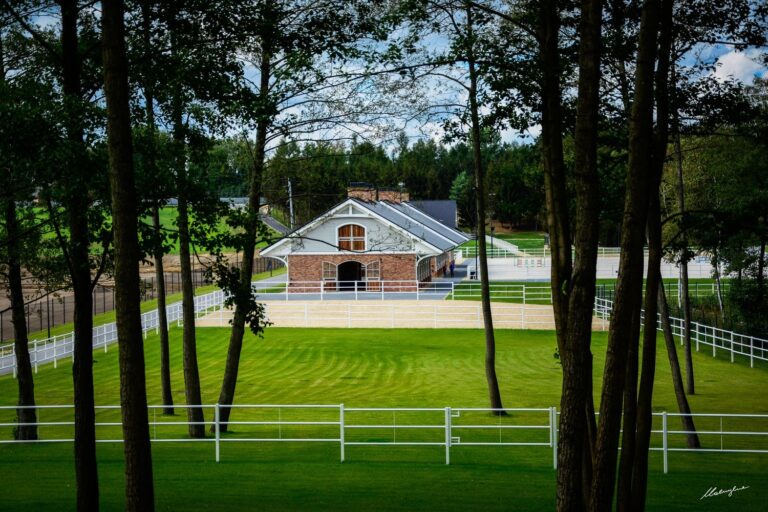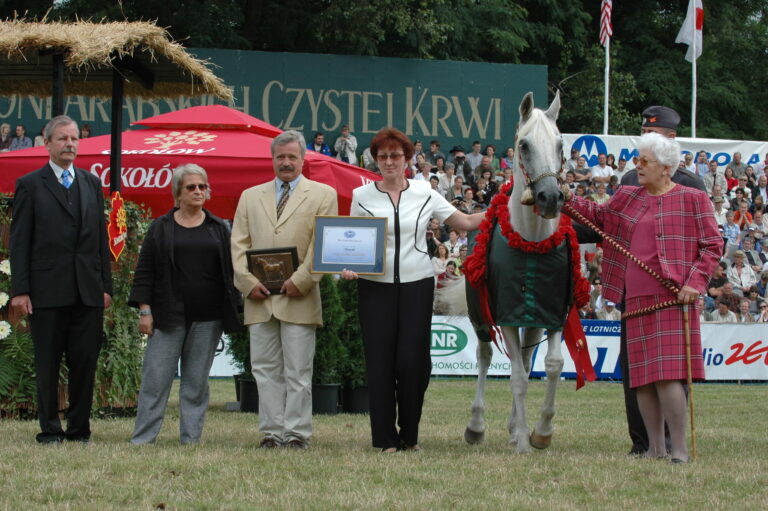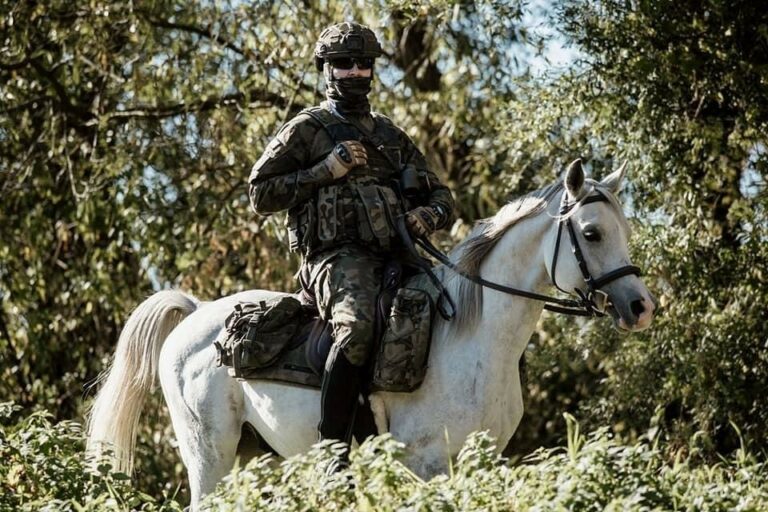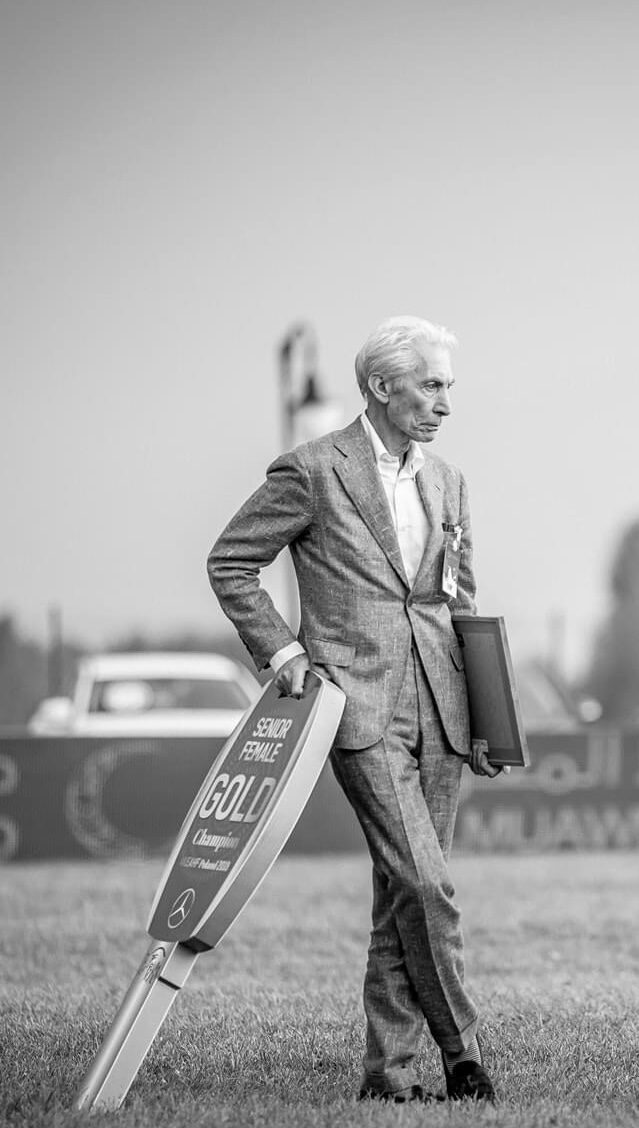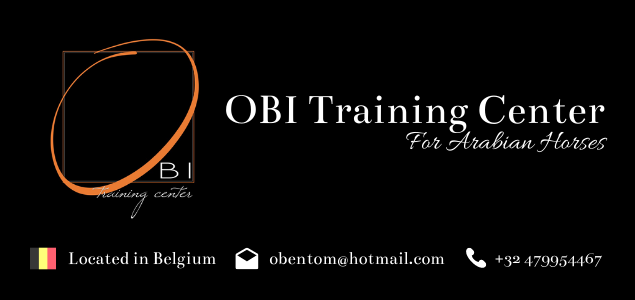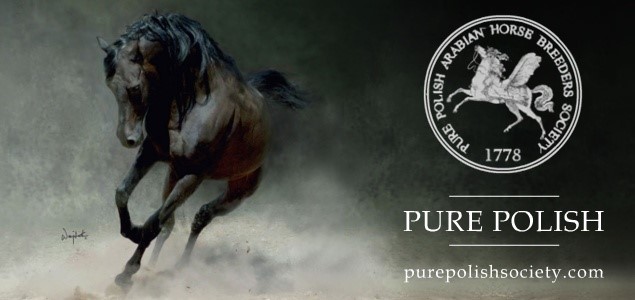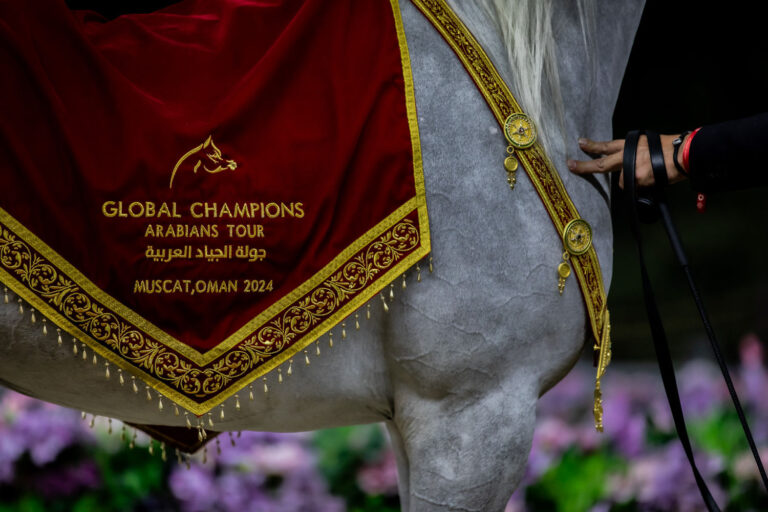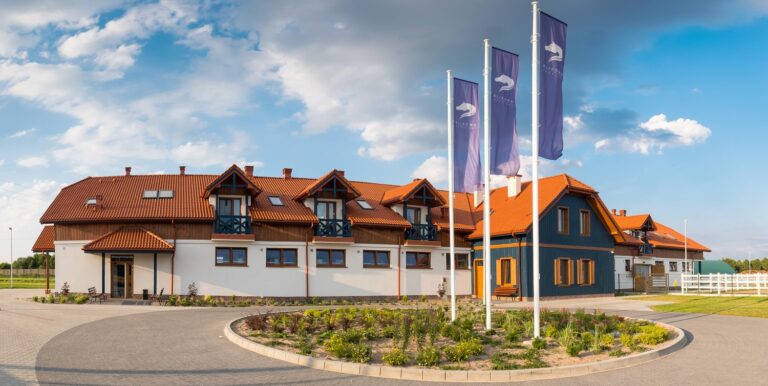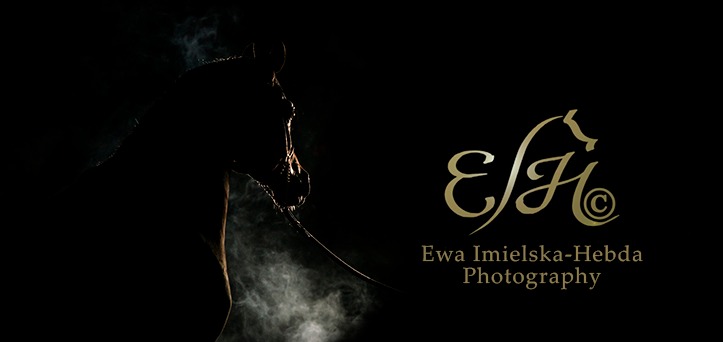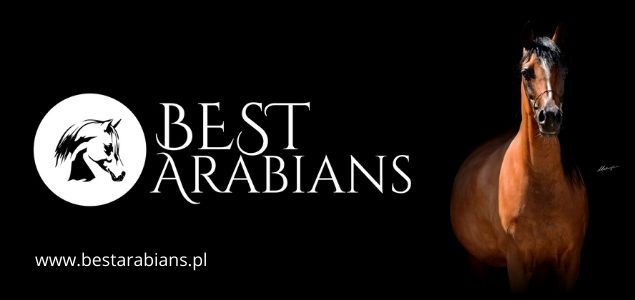
In early seventies in Michałów Zofia Raczkowska made a photo of galloping horses. She could not imagine that over thirty years later, in may 2006, the photo would appear in Japanese newspapers. It was used in a social advertisement, which publication cost almost million dollars! Japanese employees of the advertisement agency, which organized the campaign visited Poland to meet the author of that photography and to see her other works.
Monika Luft: How was the photo which fascinated the Japanese made?
Zofia Raczkowska: They also wanted to know it. They thought I had made it from a plane or a helicopter. And I was only standing on a ladder in a stable. Horses were coming back from pasture, running to a watering place. They looked like a herd in a steppe. Young Japanese graphic designers appreciated the fact that this picture was made several dozen years ago – so it’s rather old, but still impressive. The general idea of that social campaign was to make people aware of the fact that older generations are still active and needed.

M.L.: And did they ask you why you photograph horses?
Z.R.: Of course, everybody asks about it. A horse has always been something incredible to me. When I was little my dreams were about horses. I spent part of my childhood in the countryside and I remember I couldn’t pass a horse without stroking it. My seven years older sister was riding a horse bareback and I was terribly jealous about it, and I was playing truant only to spend time in a pasture. I was trying to hide there but my sister could always spot me from her horse…

M.L.: The dream came true when you started horse-riding on your own…
Z.R.: First, these were motorbike trips to Mazury lakes with my husband. Later, Bieszczady mountains and finally professional studs. The first time I took a picture of a horse was in Białka in 1962. And I will never forget the day when I first saw Arabian horses. It was in Janów Podlaski. I saw mares of all colours standing with their colts. It was a really breathtaking view. They spotted me and raised their heads vigilantly. When I took the camera I realized that my hands were shaking – it was a truly emotional experience. Later I was visiting the place as often as I could, usually at 5 am., when horses were leaving for the pasture. I knew which way they would take and I was running with a camera like crazy for two or three hours. Or I was burrowing into a haystack waiting for the morning mists. When the horses were approaching they looked unreal, like ghosts. Then I was taking pictures. I also tried to attend horse auctions. And the stud’s director – Andrzej Krzyształowicz was always very helpful. Sometimes he was even bringing the horses to a photograph. From time to time it also happened that after the auction I was running to the head groom so he let me make a full documentation. I was befriended with all the grooms. And I took pictures of all the most famous horses from Janów.
M.L.: Among them the wonderful Pilarka.
Z.R.: Oh, she was the queen of the herd. And director’s Krzyształowicz favorite. She loved to pose.
M.L. And how do you remember director Krzyształowicz?
Z.R.: On a daily basis he seemed gruff. But in fact he was very caring and hospitable. He really took care of me, always checking whether I have everything I need, whether I’m not cold or soaked. If there was a free room I could use it. In gratitude I was making photos.
M.L.: And how did the works on the catalogue look like?
Z.R.: I was visiting the studs: Janów, Michałów, Kurozwęki… And I used two-three rolls of film for each horse.

M.L.: Why is your own album „Arabians” almost unavailable in Poland?
Z.R.: One day Gene Gutowski, a producer of first Polański’s films, appeared at my place. At that time I was laying in bed in a deep depression. As a result of skiing I had huge problems with my spine. As I am a restless soul, being always off somewhere, and used to pack and unpack my luggage and cameras all the time, being bedridden was a real tragedy to me. The fact that someone like Gene appreciated my work was very upbringing. And after his visit the album disappeared from bookshops. I was laughing that he had bought the whole edition to have it as a gift for friends.
M.L.: In recent years you have worked mainly in Scandinavia. What is so special there that you cannot find in Poland?
Z.R.: A wonderful landscape and wild horses. Lots of horses which spend day and night at a pasture. For me it’s an excellent situation – I can totally devote to observation. In Poland pure-bred horses are kept in the stables for most of the day. And I like photographing horses while they are free. In Polish studs I had to force the grooms – by asking, begging or being obtrusive – to take the halters off the horses only to take a picture.

M.L.: Your style is very pictorial and is sometimes called „Impressionist”. But modern Arabian horses catalogues are usually kept in a style of an advertisement photograph. The changing of the guard? A new fashion?
Z.R.: If I had such possibilities like American photographers then maybe my photos would be different. It’s a question of means and conditions you work in. In the US you have a whole team working on placing a horse correctly to a picture! First, horses are prepared like to a fashion show – with all the range of cosmetics. Then a photographer has them driven to a hill, so that he may have an appropriate background etc. Whereas my only strength was persistence.
M.L.: Do you need a special sensitivity to photograph animals?
Z.R.: You have to love them. Every single animal. Once my daughter brought an ill jackdaw home. And I fed it, brought it up… It used to sit on my arm. When we went to the mountains for holidays I took the bird and said: „Fly Darling, Fly”. But no way – she didn’t want to. We were all weeping when she finally left.
M.L.: Was it you who infected your husband Mirosław with a horse passion? Or the other way round – he infected you? When you got married you were only nineteen.
Z.R.: Horses were mine, but his was photography. So I had no choice. Mirek was really passionate about photography and was more an more drawing me into it. In the beginning I didn’t even think that photography would become my job. But I took one picture, second… At first I helped my husband, but later he started helping me. He constructed a special machine for coloured-photos processing. It was called „Sophie”. But now he does it in the computer.
M.L.: Is it true that you are preparing an exhibition in Japan?
Z.R.: Well, I got such an offer. Thus I have a lot of work to do!

Zofia Raczkowska – she became interested in photography in early 60s. At first her works concentrated on family life and her closest surroundings. But soon she became interested in a press photography, especially picture stories. Her photos were published in daily press and in popular magazines. She became famous among publishers as a photographer of natural life and animals, but mainly horses. And she has been faithful to that passion the whole life. Her postcards with portraits of the most famous Arabian horses were published in late 60s. Cooperation with „Koń Polski” magazine („The Polish Horse”) and with Animex, where she illustrated advertisement publications of the company, let her meet the whole Polish „world of horses”. Over the years her photo archive, which includes pictures of all the most outstanding horses of different breeds, became a priceless source of information for scientists and horses’ enthusiasts.
Photos from the first period of her professional activity were published in albums „Pferde, Pferde”, „Araber Pferde” and „Aus meinem Tieralbum” by a West-German publishing house Sudwest in years 1973-1975. In the 80s, under publishers pressure, she decided to move to a coloured-photography. Her pictures soon became recognizable due to their specific pictorial style.
She won the main Kodak prize in the international calendar competition in Stuttgart in 1987. She had her works exhibited in Columbia (1983), Denmark (1985) and Sweden (1989). She won a prestigious Grand Prix Award in an international exhibition „Horses of the World” organized in Riga in 1990. Her album „Arabians” was published in 1992. Her retrospective exhibition took place at the turn of 2001/2002 in Warsaw’s gallery of Polish Artists-Photographers Association.


